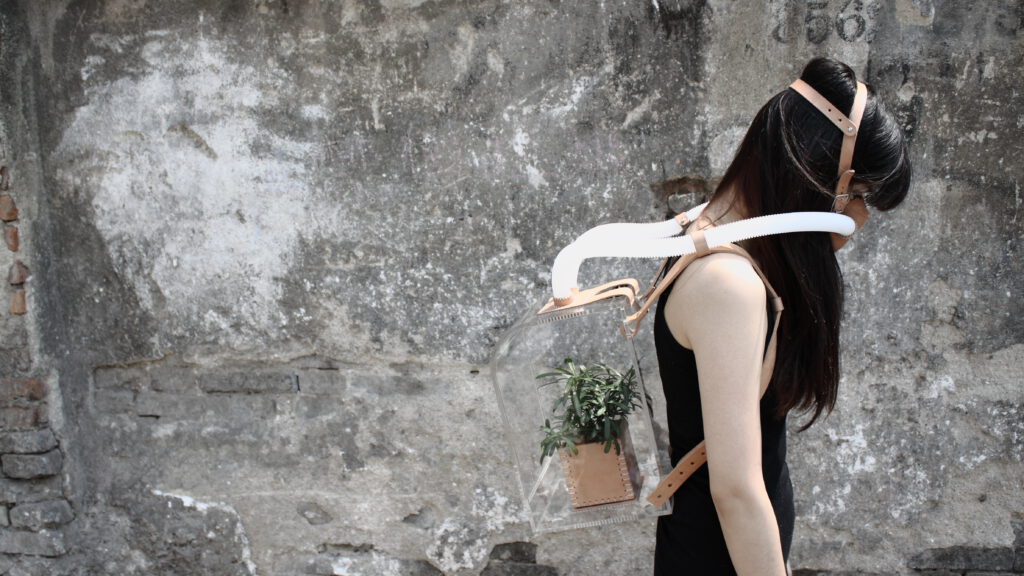Read an interview and photo essay about Chih Chiu’s thought provoking work
Dr Thom Davies, Research Fellow at the Department of Sociology, University of Warwick @ThomDavies
Some photographers and artists simply document pollution. They bare witness to the many social injustices that toxicity produces. In that witnessing there is the hope, at least, that opinions may change, and political action may take place. Others attempt something more poignant. Taiwanese designer Chih Chiu created a body of work titled ‘A Voyage on the Planet‘ that speaks to the fragility of the environment, and our own vulnerability.
At first sight Chih Chiu’s provocation may be seen as firmly in the realm of science fiction. His plant-based breathing apparatus conjures up a dystopian world where even breathing needs special equipment. Yet his conceptualisation reminded me of Nick Shapiro’s recent work with Public Lab, where he experiments with using plants to filter formaldehyde pollution. As Nick explained during the Toxic Expertise annual workshop, the road to detoxification does not only involve revealing the source of toxic harm.
Intrigued by Chih Chiu’s project, I contacted him and read the artists statement that went with the project:
‘Owing to the subtle and mysterious sense of the world in a constant state of flux, we have desire to explore the unknown. With essence from where we spiritually belong to, we never get lost.’
Wanting to find out more, I asked him some questions. As he explained, his project has been used successfully in India to protest the placement of a landfill site:
What inspired you to create the ‘Voyage on the Planet’?
I was inspired by my own life path. I moved to China when I was very young. Back in those times the living quality was tough for a young kid like me. But I appreciate these experience which equipped me with adaptability in any fast-changing situation, while keeping the idea of home in mind. The plant means something I brought from home to start an adventure with.
Your project is very thought provoking. What role do you think art and photography can have in protecting the environment?
I admire people’s creativity and their way to use the power of art. Being exhibited is one way to provoke the public, but the most impressive thing for me was when some people from India asked for my permission to reproduce this work by themselves. They used the artwork to negotiate with local government on a landfill plan in their city centre. They made it, they won the negotiation, the government cancelled the plan. I was not sure about how much my work contributed to the negotiation but it’s great to be involved.
What is the overall message of the project?
We have to move forward for sure, but don’t forget where we come from.
Please find some photographs of Chih Chiu’s ‘Voyage on the planet‘ below:

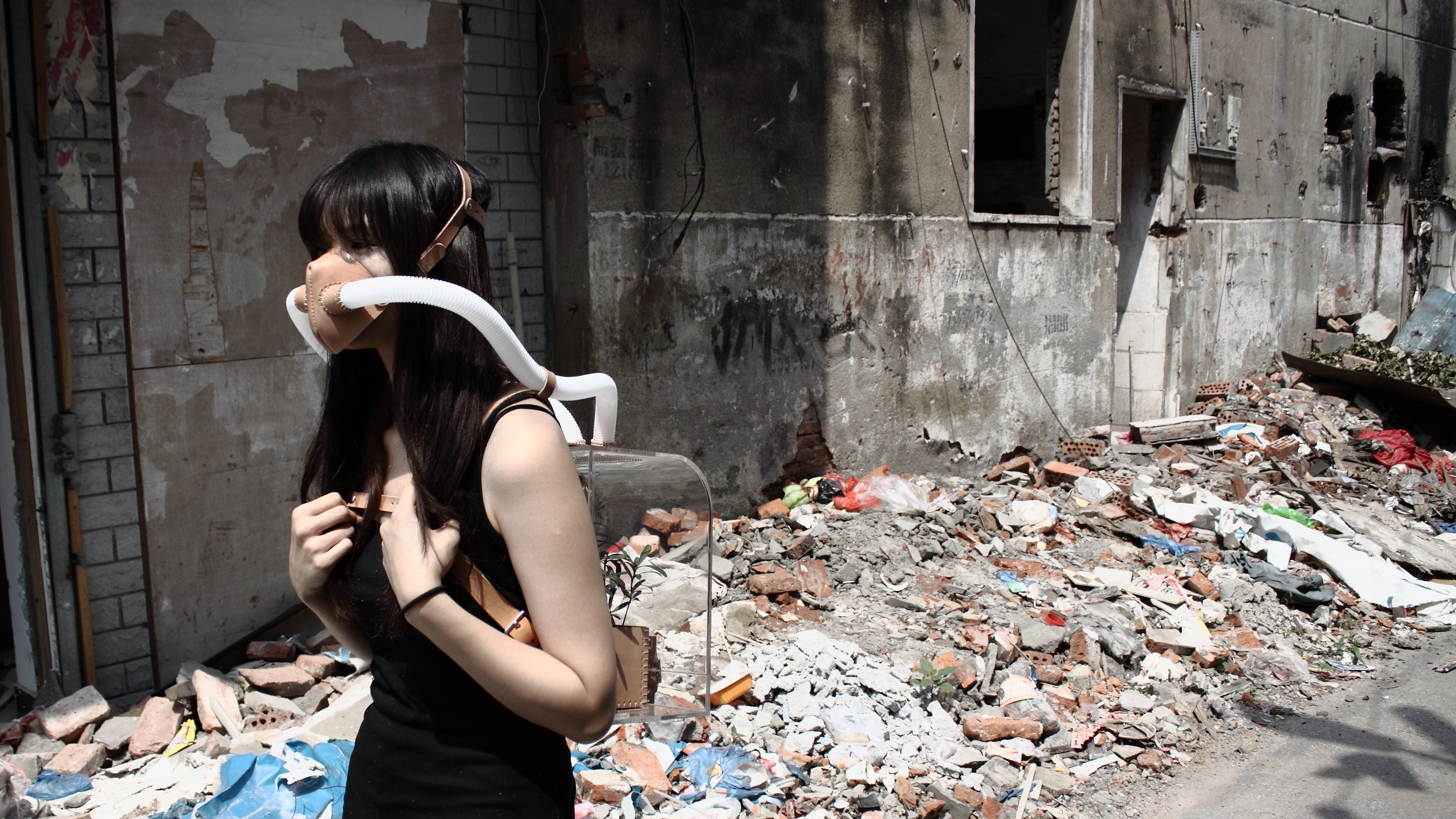
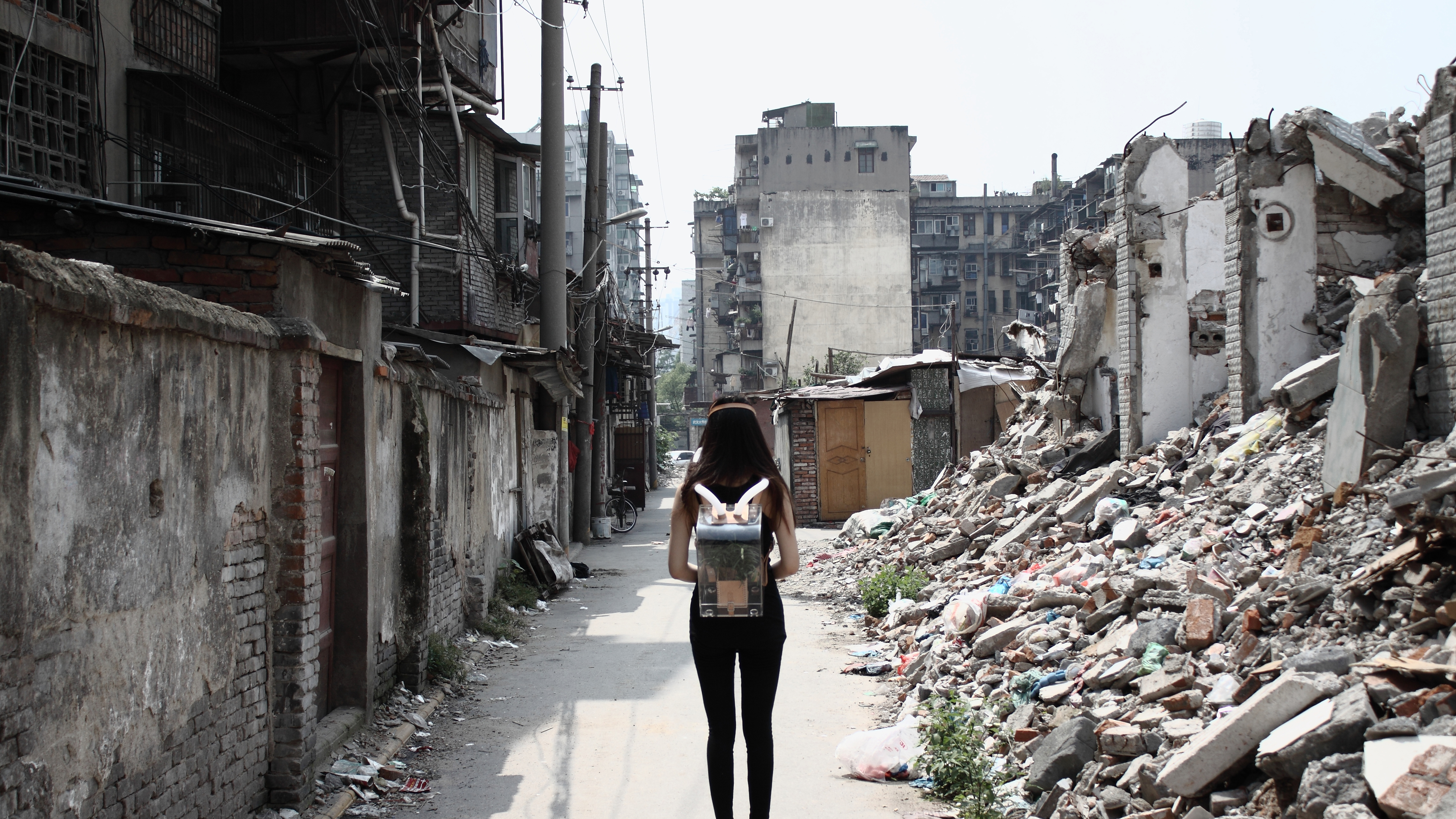

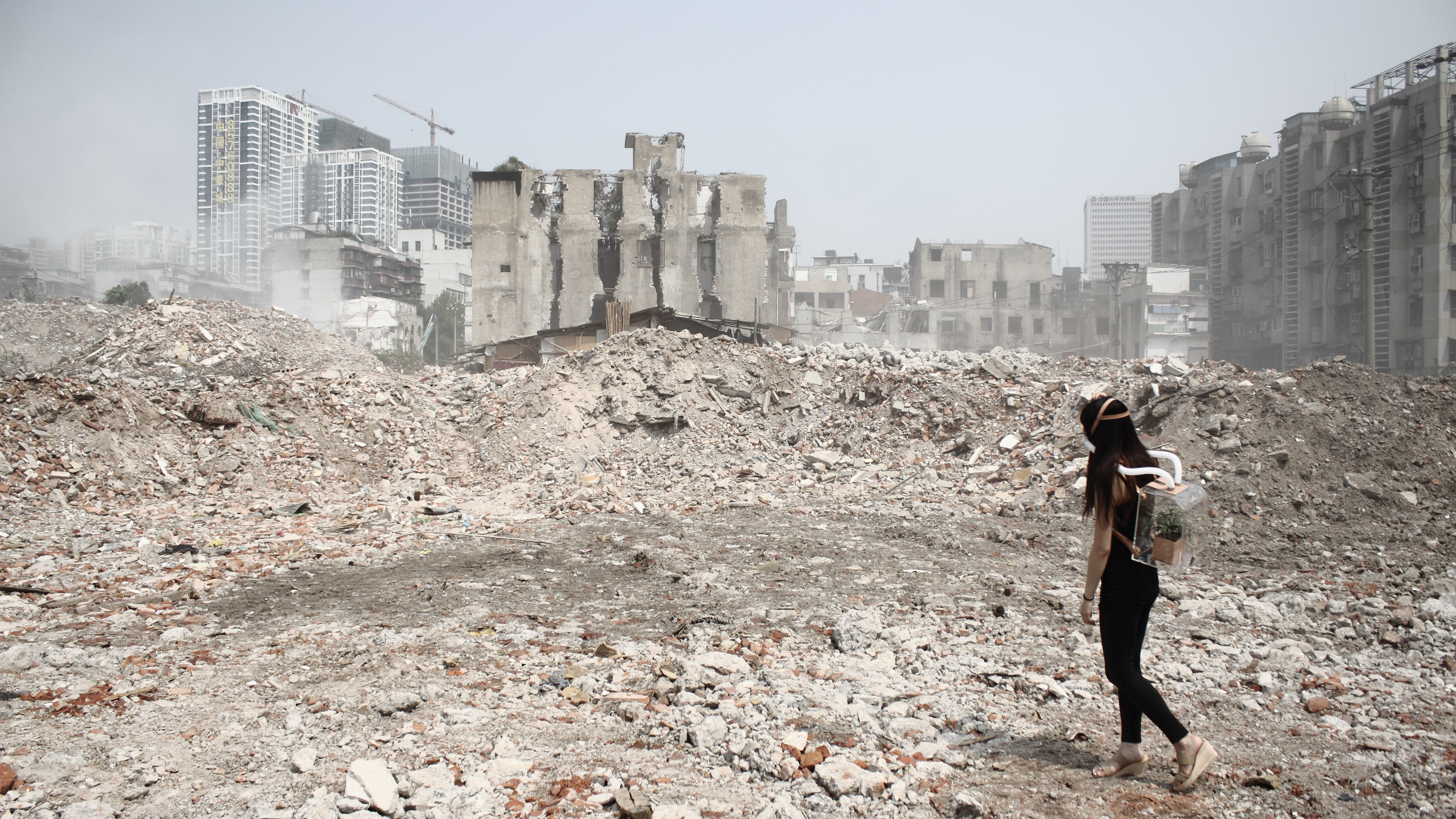
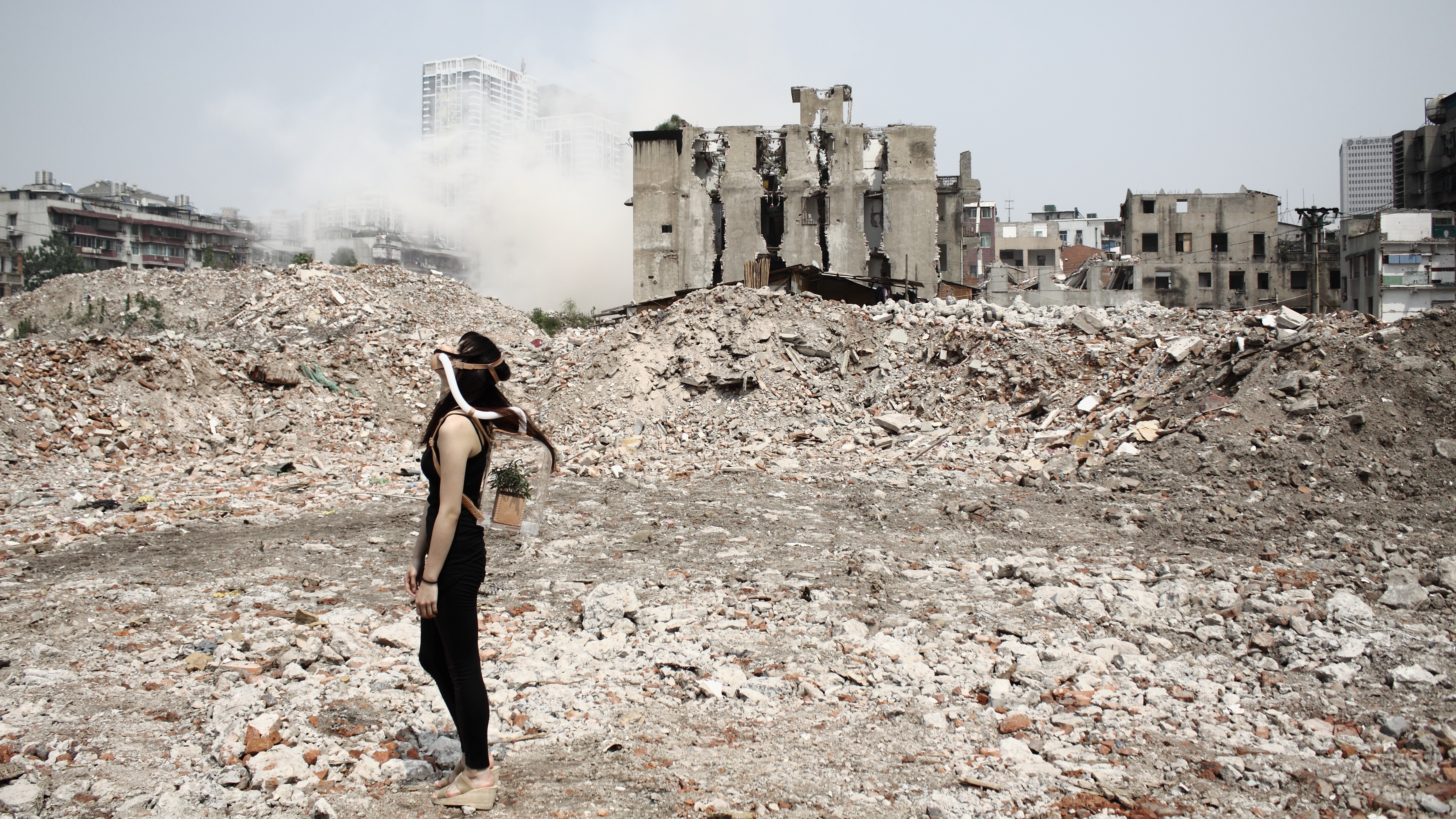
Chih is a designer from Taiwan. He recently graduated with MA and MSc from Innovation Design Engineering at Royal College of Art and Imperial College London.
Many thanks to Chiu Chih for answering my questions and allowing me to showcase his facinating project. You can check out his website here. Thanks also to Dan Webster for pointing me in the direction of Chiu Chih’s work.
Other articles in this Special Issue:
- Editorial: Toxic Visions – Photography and Pollution
- Exposing a Chemical Company
- The Red Forest: Picturing Radiation with Infrared Film
- Disposable Citizens: viewing Chernobyl through the lens of those live there
- The derelict afterlives of para-nuclear waste
- Rare Earthenware: photography, pottery, and pollution
- Graveyard of Giants: the Toxic Afterlives of Ships
- Treasure: Landscapes of the U.S. Strategic Petroleum Reserve
- Toxic Expertise Annual Workshop 2018
